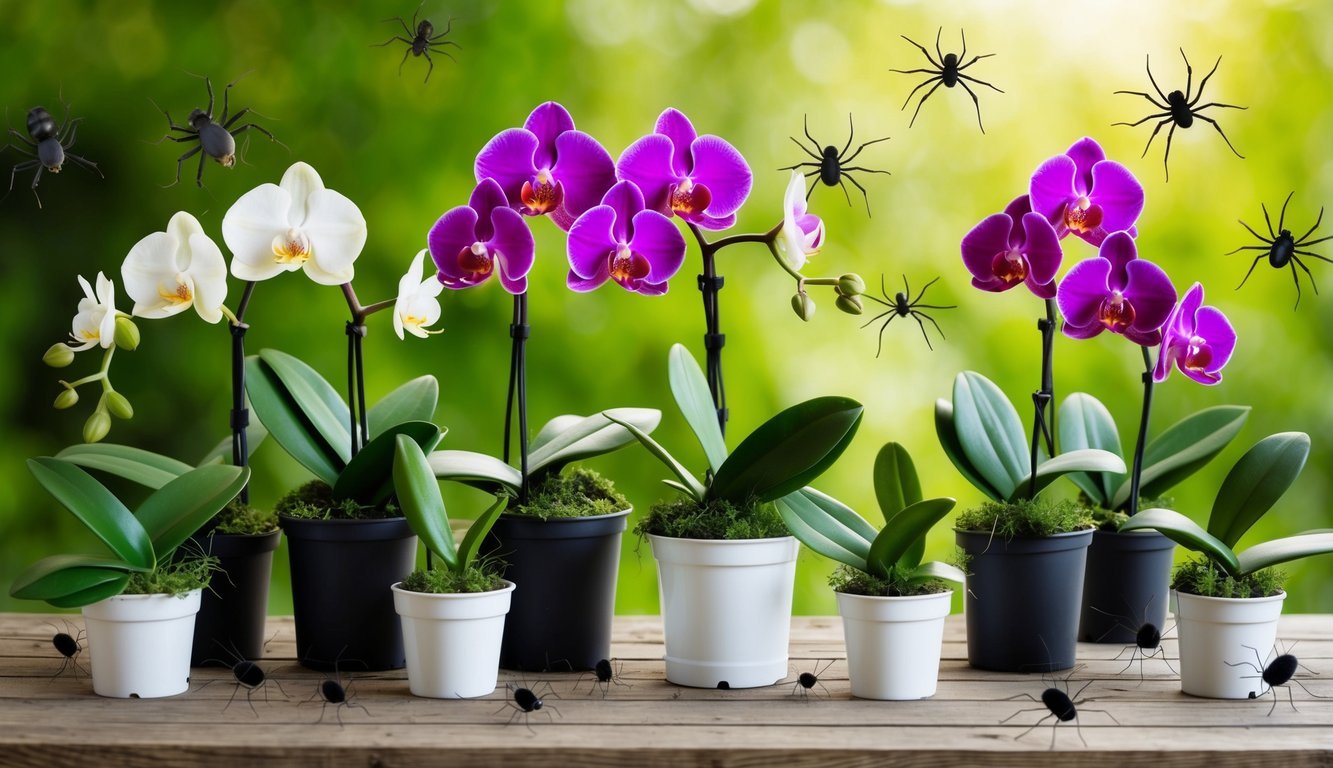
Orchids, members of the stunning Orchidaceae family, are celebrated across the world for their captivating beauty.
Found on every continent except Antarctica, these perennial flowers are characterized by their thick, waxy petals and symmetrical shapes.
Most orchid species thrive as epiphytes, meaning they attach themselves to trees for support without harming their hosts.
To grow successfully, orchids need bright, indirect light, moderate humidity, and well-draining potting mediums.
Depending on the species, these exquisite plants can flourish outdoors in USDA Zones 2 through 9, or as charming houseplants.
Common Orchid Pests
This article delves into 13 common pests that orchid lovers might encounter.
Here’s a rundown of these unwelcome visitors along with tips for managing them effectively:
- Ants: These tiny pests are usually drawn to honeydew excreted by sap-sucking insects.
Finding and eliminating the source—those sapsuckers—is critical.
To further protect your orchid, consider repotting it with fresh potting mix after rinsing the roots.
- Aphids: Small and soft, aphids feed on plant sap, resulting in distorted leaves.
Combat them by simply washing the affected areas with water, followed by an application of neem oil.
- Caterpillars: Renowned for their appetite, caterpillars can cause significant damage to your orchids.
Two effective control methods are hand-picking or using Bacillus thuringiensis (Btk) as a treatment.
- Cockroaches: Cockroaches can infiltrate your orchids, often sneaking in through drainage holes.
A spray of neem oil works well to deter these resilient pests.
- Fungus Gnats: These little flies often thrive in overly moist conditions, suggesting your orchids may not be in ideal growing environments.
Improving drainage and setting up yellow sticky traps can help manage their presence.
- Grasshoppers: Frequently encountered in outdoor settings, grasshoppers munch on orchid foliage.
You can either collect them by hand or spray neem oil on the affected plants.
- Mealybugs: Known for their sap-feeding habits, mealybugs can be dealt with by dabbing a cotton swab in alcohol and applying it to the affected spots, or by treating the plant with neem oil.
- Orchid Blossom Midges: These pests lay eggs in flower buds, leading to a condition known as “bud blast.” The best way to control them is by removing and discarding damaged buds.
- Scale: Scale insects suck plant sap, causing leaves to yellow and drop prematurely.
Use neem oil or isopropyl alcohol to treat and remove these pests effectively.
- Slugs and Snails: These nocturnal creatures leave behind telltale perforations in leaves, particularly in damp conditions.
Manual removal and copper barriers are effective strategies for keeping them away.
- Spider Mites: Tiny but destructive, spider mites cause speckling on leaves.
Rinsing the plants thoroughly and applying a natural pesticide like neem oil can help control their impact.
- Thrips: These minuscule flying insects create stipples and discoloration on petals.
Keeping adequate moisture levels in your orchid’s environment and employing yellow sticky traps can help manage an infestation.
- Whiteflies: Usually found on the leaf undersides, whiteflies can lead to yellowing leaves and drop.
Make use of sticky traps and neem oil to combat severe outbreaks.
Natural Control Methods
For those managing orchids in greenhouses, introducing beneficial predators like green lacewings can offer a natural way to keep pests in check without chemicals.
Creating a Nurturing Environment
Cultivating orchids successfully demands commitment and an eye for optimal growth conditions.
When orchids are vibrant and healthy, they are better equipped to fend off pest invasions, making it essential to create a nurturing environment for these enchanting plants.
Source: Gardenerspath

